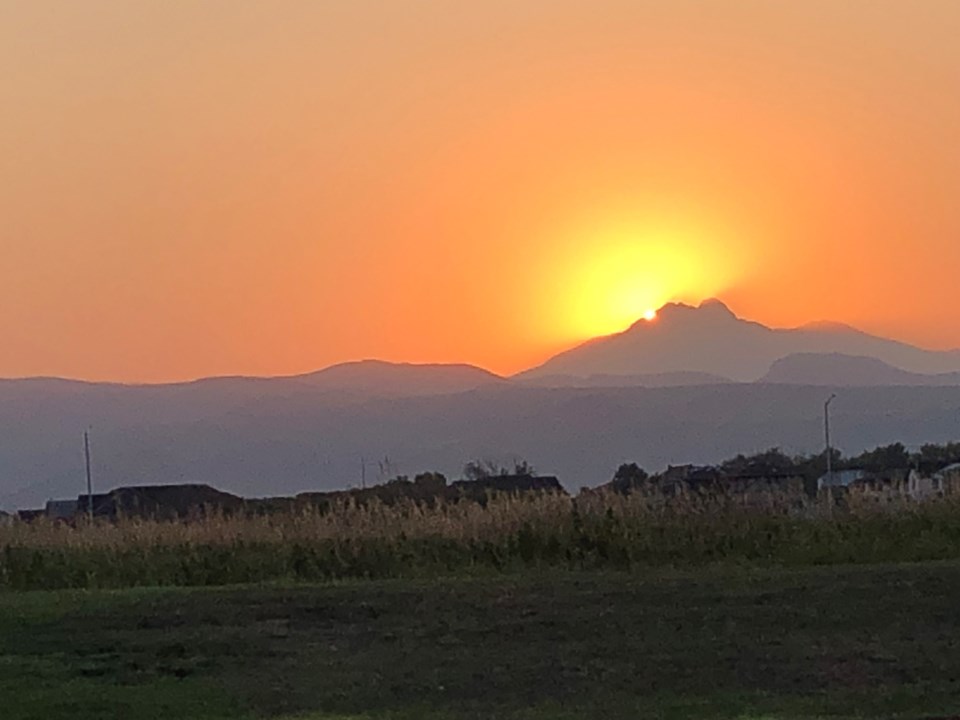Northern Colorado has endured a record-breaking string of air quality days so severe they can be especially unhealthy for the most vulnerable Boulder County residents.
The hardest hit by the bad air include the elderly, children, people with lung and heart problems as well as those who live near roads with heavy traffic and next to oil and gas operations, according to a Boulder County Public Health news release.
The Denver Metro North Front Range, including Boulder County, has had more than 53 ozone action alerts since May, breaking the record for number of alerts issued in a single season since record keeping began in 2011, according to a Boulder County Public Health press release.
Previously, 2018 had the highest number of ozone action alerts. In recent days, due to climate change-fueled wildfires burning across the American West, the Colorado Department of Public Health and Environment has issued action alerts for multiple pollutants that include both ozone and fine particulate pollution from smoke, the BCPH news release said.
“The health hazards associated with smoke are compounded by high ozone,” said Bill Hayes, air quality coordinator for BCPH, in the news release. “The Denver Metro North Front Range, an area already failing to meet federal health-based ozone standards, has now seen 39 consecutive days of ozone action alerts.”
“With both smoke and ozone at dangerous levels,” Hayes said, “Colorado’s beloved outdoors can be an unhealthy place to be when it comes to your heart and lungs.”
Smoke and high temperatures will continue this summer, prompting BCPH to urge residents to protect themselves from health and lung damage.
BCPH recommends taking the following actions when air quality is poor:
- Remain inside with the windows and vents sealed
- Avoid exertion outdoors when visibility is less than five miles or on afternoons and evenings when ozone is high
- If individuals cannot avoid being outside when smoke levels are high, consider wearing a properly fitted N95 or P100 respirator to reduce exposure. Cloth and paper masks do not offer protection from fine particles, which are small enough to go through the mask. More effort is required to breath when wearing a respirator, so strenuous exercise or heavy exertion is not recommended when wearing one.
“Although N95 respirators can help with smoke exposure, ozone is a gas that is not blocked by these respirators,” Hayes said. “Pay attention to ozone levels or just avoid exerting yourself outdoors or just avoid exerting yourself outdoors in the afternoon or early evening on action alert days.”
Smoke and ozone levels are caused by wildfire activity worsened by climate change and air pollution sources that cause climate change, the news release said. Ozone is invisible and is produced when volatile organic compounds (VOCs) mix with combustion emissions in the presence of sunlight. Boulder County’s VOCs predominantly come from oil and gas operations to the northeast and combustion byproducts from vehicles, the news release said.
“The health of all of our residents is at risk of these conditions, but we’re particularly concerned about sensitive populations,” said Collin Tomb, climate and health strategist for Boulder County, in the news release.
“This includes the elderly, children, those with lung and heart conditions and disproportionately impacted communities that may already live close to sources of air pollution, such as busy roadways and oil and gas operations,” Tomb said. “Community members who work outdoors or don’t have access to indoor spaces are also most at risk.”
For more information about air quality and health, contact Bill Hayes, at 303-441-1574 or [email protected].


